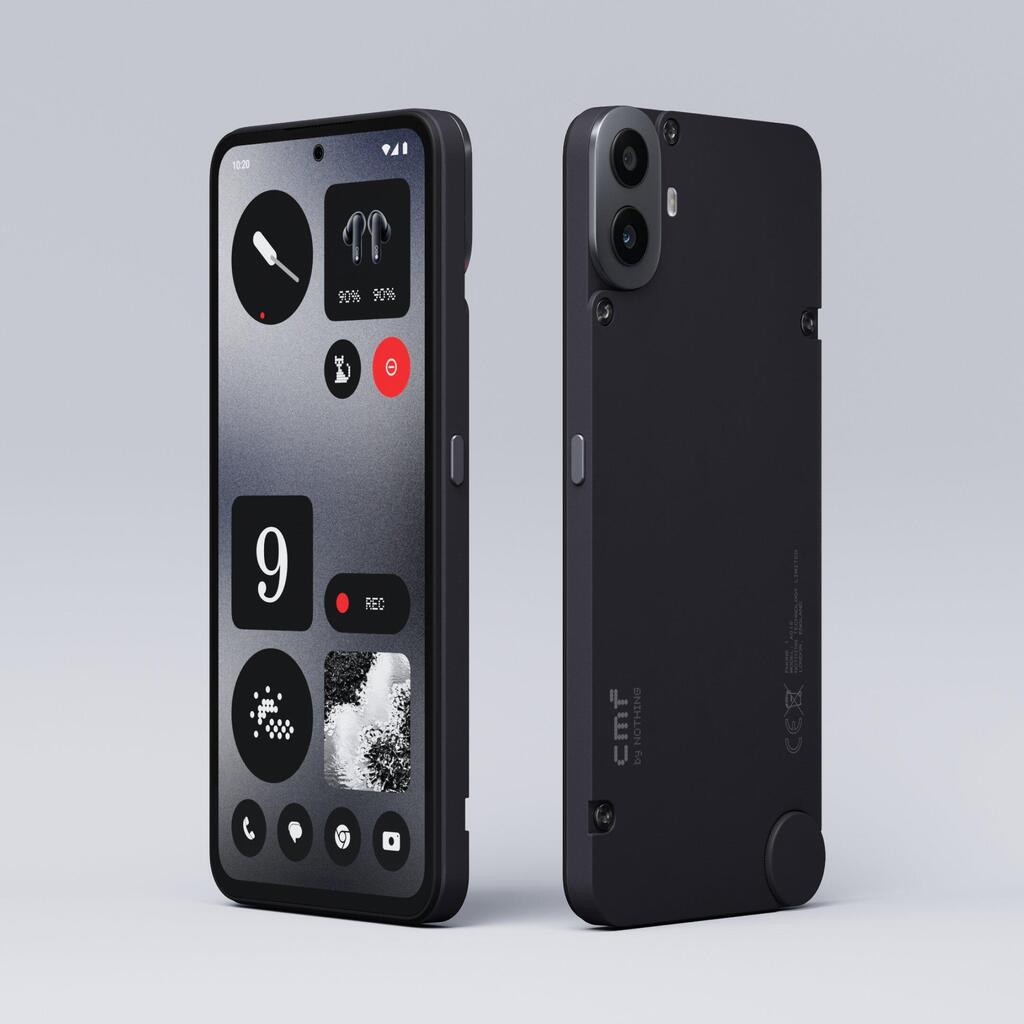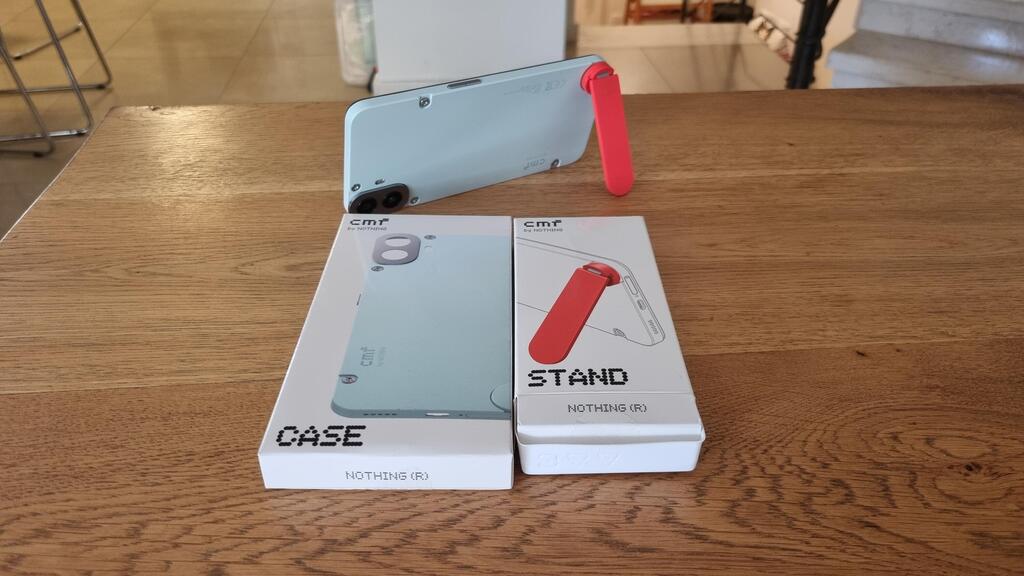
Smartphone review
The new Nothing phone: budget-friendly or just cheap?
CMF Phone 1 enters the market with a unique twist, but does it live up to the legacy of its parent brand?
Top Line
Nothing’s successful devices set high expectations, with the assumption that they offer more for less money. With CMF, you’ll need to temper those expectations. Its first phone is good overall—but it’s unrealistic to expect a device starting at around $250 to provide top-tier images or handle heavy games quickly and easily.
The CMF Phone has quite a few competitors at this price point, some of which offer faster charging and more features that it lacks. If you add $80—a not insignificant amount—you could opt for Nothing’s Phone 2a instead.
The CMF Phone features a very good screen, a strong battery, solid build quality, and feels durable and stable. It could be a good option as a first or second phone for children or teenagers, for those who don’t need NFC or eSIM. They might also appreciate the gimmick of the interchangeable back and accessories more.
Details
The company Nothing is launching its first phone—again. This time, however, it's a new product from CMF, the budget-oriented and relatively new sub-brand of the British company. CMF forgoes many of the standout features that defined Nothing's earlier products.
Let's rewind for some context: Nothing was founded by Carl Pei, one of the co-founders of OnePlus. The first product launched by this new company was a pair of Bluetooth headphones, followed by a smartphone whose most notable features were a transparent body and backlights that displayed notifications with various flashing patterns. Nothing's products have been relatively affordable, and the company even launched a budget smartphone. But that wasn’t enough, so last September, they introduced CMF as a sub-brand, which launched with Bluetooth headphones, a smartwatch, and a fast charger.
Now comes the first phone from this relatively new brand, retaining a name typical for the company—CMF Phone 1. Nothing's devices introduced some innovations and gimmicks, and generally made a good impression—they performed very well at competitive prices. But can the company replicate that success with an even cheaper brand and a device priced at around $250? We took the new smartphone for a test run.
Design and build: old gimmick out, new gimmick in
One of the key features of previous Nothing devices was the transparent back with LED lights displaying various notifications. The first CMF device has none of this—the back is opaque, with no lighting except for a flashlight/flash attached to the camera lenses.
But a gimmick is still present: you can replace the rear panel of the device. The back panel, made of plastic, is attached to the phone’s body with four screws. If you buy a panel in a different color, it comes with a SIM tray removal pin that also functions as a screwdriver to remove the old panel and replace it (note: the battery should not be removed).
This gimmick has garnered some enthusiastic responses, and Nothing even shared a file for designing accessories using 3D printers, allowing users to create and share their own ideas. But how does it work in practice? It’s okay, though perhaps I’m not the target audience for this feature. The included screwdriver isn’t the most convenient, but the screws are generally easy to remove, and to CMF's credit, they’ve chosen screws with a standard head, so any other screwdriver will do.
After removing the screws, you also need to remove the SIM tray before pulling out the back panel and replacing it with another. It’s a fairly quick process, and if you don’t repeat it too often, it’s a nice idea. However, the screws are small, and you need to ensure they don’t get lost during replacement. It might be easier to use a colored protector that will protect the device, add color and design, and doesn’t require screwing.
The gimmick doesn’t end there: in the lower right corner of the device’s back, there’s an "accessory point"—a small circle with a screw hole for attaching external accessories. CMF offers a foldable stand to stabilize the phone when watching videos, a strap for hanging the phone around your neck, and a card case for storing cards like credit cards, IDs, or employee cards. These accessories feel somewhat more practical, and it will be interesting to see what additional accessories users create. The stand, for example, is relatively small, easily assembled and disassembled, but might be easily lost.
One issue: the device doesn’t come with these accessories—you’ll have to purchase them separately. Each new back panel costs around $40.
In case you were wondering—yes, there is also a front to the phone: a 6.67-inch screen with a thin black frame and a selfie camera that occupies minimal space at the top. On the right side is the power button, on the left are the volume buttons, and at the bottom is a SIM drawer, which also accommodates a microSD card—a feature rarely found in smartphones today. However, you won’t find a headphone jack here.
The fingerprint reader is located under the screen and had some issues during the initial setup, but it performed well during regular use. The device is thin, large, weighs around 200 grams, and doesn’t feel heavy.
In terms of protection, the device meets the IP52 standard, meaning it can handle rain and some dust but should be kept away from water. The build quality feels solid, but the back is plastic, and there’s no mention of Gorilla Glass protection for the screen, so caution is advised.
Hardware: Does the job
The CMF Phone is equipped with a Mediatek Dimensity 7300 processor, 8GB of RAM, and 128GB or 256GB of storage. You can opt to reduce storage in favor of more memory, and as mentioned, you can expand storage with an external card.
For regular, basic use, the device works smoothly, partly thanks to the streamlined interface from Nothing, which I’ll expand on later. However, when handling more complex tasks, especially those involving heavy graphics, performance is less smooth. You can run heavy games on the smartphone, and it doesn’t even heat up, but loading times for the game and its menus are slow. This is understandable—it’s not a flagship device, and the price is significantly lower than more powerful phones.
To achieve such a low price, some features and capabilities had to be sacrificed. CMF’s first phone lacks eSIM, a feature found in some competitors at this price point, and there’s also no NFC, meaning you can’t use the phone for contactless payments. The device also has only one speaker at the bottom, which provides decent sound but isn’t loud, and it’s a bit strange to watch a movie with sound coming from just one side.
The screen, however, is impressive. According to CMF, the maximum brightness is 2,000 nits, providing a clear image even under direct sunlight—not at every angle, but it’s easy to find a comfortable one. Even in the shade, it displays vibrant colors in photos, videos, and games.
All this is powered by a 5,000 mAh battery with only wired charging at 33 watts. The battery easily lasted a day and a half, and possibly longer, depending on usage. There’s no charger included, just a cable, and charging from 15% to 50% took about 30 minutes with a 25-watt charger, reducing to 20 minutes with a fast charger. A full charge with a 25-watt charger took about an hour and 20 minutes, while with a fast charger, it finished in about an hour.
Software and interface: light and fast
The CMF Phone runs Android 14 with the Nothing OS 2.6 interface. If you’ve used a Nothing device before, you won’t find major changes here. The design is unique and close to stock Android: no apps are pre-installed without your consent—not even Facebook, TikTok, or Spotify. There are almost no proprietary apps from the manufacturer—just a calculator, a camera app, call recording, and an app to control Nothing’s headphones. Want to view your photos? Use Google Photos. Need to browse folders on your device? Google Files is there.
At first launch, you can choose between Nothing’s distinctive design, which mainly uses black and white colors with old Dot Matrix-style fonts, or a more standard Android style—this choice can be changed later.
There’s no navigation bar with shortcut buttons to the home screen or back; navigation is done via gestures, which feel fast, smooth, and quite enjoyable.
Camera: good enough at first glance
As part of its cost-saving measures, CMF offers a single main camera. While there are two lenses on the back, only one is equipped with a 50-megapixel sensor; the other is a 2-megapixel depth sensor. You can get by with one camera, and at first glance, it seems to provide decent photos in good lighting and night photography. However, on closer inspection, the images lack sharpness, partly because the phone lacks an optical image stabilizer, which compensates for hand movements. This means you have to hold the phone completely still when taking photos, which can be challenging without a stabilizer.















